#Chernobyl nuclear accident
Photo

A Chernobyl liquidator pushes a baby in a carriage who was found during the cleanup of the Chernobyl nuclear accident, 1986
#Chernobyl#liquidator#baby#carriage#cleanup#nuclear#accident#nuclear accident#Chernobyl nuclear accident#1986#ukraine#soviet union's collapse#80's#80s#CCCP#URSS#black and white photography#photo#photography#b&w photography
373 notes
·
View notes
Text
Stained glass windows in the administrative building of the Chernobyl nuclear power plant.







The Chernobyl Nuclear Power Plant was one of the largest in the Soviet Union and the poster child of the Soviet nuclear power industry. As such, little expense was spared on details like these windows.
The Soviet Union often used motifs in abstract art to promote Communism and laude their successes.
For more info, check out my reblog of this post.
#chernobyl#socialist realism#soviet union#ussr aesthetic#soviet art#ussr (former soviet union)#nuclear power#radiation#accidents and disasters#1k#2k#history#reactor#disaster#stained glass#nuclear#propaganda#soviet propaganda#autism#ussr art#chernobyl hbo#chnpp
4K notes
·
View notes
Photo

129 notes
·
View notes
Text
wild when you go down the rabbithole of fixation only to emerge like 3 weeks later deeply educated on a topic that will be of no use to you in the future
#if someone ever stops me on the street and asks me to explain in depth the the series of events that lead to the chernobyl accident#i am SO prepared#its just so fucking wild man i cant even express it#i listened to midnight in chernobyl a couple weeks ago and started doing some Research#alas it also lead me to other nuclear accidents#which are also fascinating#and i started listening to this book like 2 days before we went over the therac machine bug in class#FUCK dude radiation is scary and deeply interesting#lea speaks
8 notes
·
View notes
Text
1986 – The Chernobyl disaster
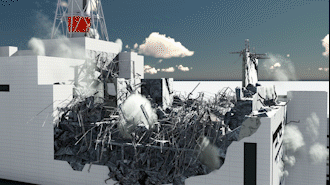

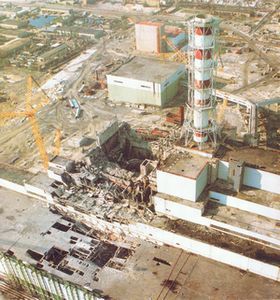

The Chernobyl disaster was a nuclear accident that occurred on 26 April 1986 at the No. 4 reactor in the Chernobyl Nuclear Power Plant.
23 notes
·
View notes
Text
feeling weirdly defensive over nuclear energy tonight crazy what being on your period does to you
#saw some bullshit anti nuclear propaganda on a supposedly progressive page#first of all the reason it would be a bad idea for greece to have nuclear power plants isn't because of the seismic activity#it's bc everything in this country gets neglected and all we ever do is cut corners. thats not an inherent issue with nuclear power#it's just that we suck and wouldn't maintain such an intricate system properly to keep it safe enough#but that goes for literally any mode of energy production in this god forsaken country lol i don't think our coal factories are any safer#im just BEGGING people to at least read up and TRY to understand nuclear energy production and then form an opinion on it#because it seems most opinions are shaped from collective mythology from the chernobyl disaster#which btw most of us don't know how or why it happened!!!!! it all just gets boiled down to ''nuclear power bad''#of course radiation is dangerous and nuclear power production should be handled with extreme care and precision#and nuclear incidents and accidents are serious!!!!! don't get me wrong!!!!!#but ppl acting like a nuclear power plant will just spontaneously combust is so ignorant#I HAD A SMALL HYPERFIXATION PHASE ABOUT THIS OK LEAVE ME ALONE!!!!!!!!!#anyway greek progressives and leftists exhaust me more and more every day#just say you don't know enough to have an informed opinion it's not that hard!!!! instead they straight up spread misinformation#just to support their political arguments
15 notes
·
View notes
Text
watching a video about chernobyl. hope this doesnt awaken anything in me
#nuclear accidents was my last hyperfixation before the beatles#and it..... was not good#like i fucking couldnt sleep i was thinking about the fucking elephant foot in the basement of chernobyl#fiona.docx
6 notes
·
View notes
Text
special interests for me are sometimes infodump zone and sometimes it is i am going to think SO HARD about this FOREVER and keep rereading the wikipedia page until i have it damn near memorized
#mal.txt#the demon core was a 6.2kg subcritical mass of plutonium manufactured by the united states during world war ii#i watched every one of kyle hill's half-life histories and they live in my brain now there is radiation in there#this is why that caesium post fucking got to me so bad before i had even seen the goiânia incident added i was thinking about it#dont touch caesium canisters it actively wants you dead#but also MAN. how do you even#get yourself in that fucking situation#idk i feel the urge to happy/excited stim when i am thinking about it but it also SCARES ME#radiation is fucking terrifying and i love it so so deeply i want to know everything about every nuclear accident#i had no intention of watching chernobyl on hbo until i started getting so (vibrates)#i love learning about nuclear accidents but i also understand it is fundamentally the safest power generation method#(safest and most sustainable at current technological capabilities)#solar n wind are cool but like. uranium is just spitting out heat constantly are you going to let it go to WASTE?
12 notes
·
View notes
Text
The Most Dangerous Film in the World
Three days after the explosion and meltdown of Chernobyl’s Nuclear Reactor Unit 4 on April 26, 1986, Soviet filmmaker Vladimir Shevchenko was granted permission to fly over the 30-square-kilometer site known as the Exclusion Zone. His assignment was to document the cleanup operations being carried out by Ukrainian workers and volunteers, most of whom would eventually succumb to the extraordinarily high levels of radiation they were exposed to while trying to contain the disaster.

When Shevchenko’s 35mm footage was later developed, he noticed that a portion of the film was heavily pockmarked and carried extraneous static interference and noise. Thinking initially that the film stock used had been defective, Shevchenko eventually realized that what he had captured on film was the image and sound of radioactivity itself.

This article is adapted from Susan Schuppli’s book “Material Witness: Media, Forensics, Evidence.” Buy the book: Amazon, Bookshop, more options
Upon projection, small flares of light momentarily ignite the surface of the film. Sparking and crackling, they conjure a pyrotechnics of ghostly defects that are the consequence of decaying radioactive particles moving through the exterior casing of Shevchenko’s 35mm Konvas camera to activate the emulsive properties of the film. What we are witness to, in this fleeting energetic event, is the radiological conversion of a somewhat pedestrian account of the disaster into the most dangerous film in the world.
“Radiation is a fatal invisible foe. One that even penetrates steel plating. It has no odor, nor color. But it has a voice. Here it is. We thought this film was defective. But we were mistaken. This is how radiation looks,” Shevchenko narrates over the film. “This shot was taken when we were allowed a 30-second glimpse from the armored troop-carrier. On that April night the first men passed here — without protection or stop-watches, aware of the danger, as soldiers performing a great feat. Our camera was loaded with black-and-white film. This is why the events of the first weeks will be black and white, the colors of disaster.”
Shevchenko’s film, “Chernobyl: Chronicle of Difficult Weeks,” provides us with an intimate view into the space of disaster. And while its pictorial mediation allows us to remain at a safe and objective distance from the hazard, the sudden distortion of the documentary’s sound and images, and the Geiger-like interference of radiation, inaugurates a sense of dread that what we are witnessing on film is in fact the unholy representation of the real: an amorphous and evil contagion that continues to release its lethal discharges into the present and future yet to come.
The contaminated film footage thus complicates the conventional partitioning of time by hurling us unwittingly back into the contact zone of the event — not merely as viewers but also as witnesses to an event whose time has not yet passed. Even when I am watching a safe VHS copy of this film, I am reminded of the transgressive agency of the nuclear to contravene the material borders that traditionally maintain the integrity between human and nonhuman entities, between bodies and images, between past and present.
Given what we know about the radical chemistry and anarchic temporality of nuclear materials, it is impossible to fully distance ourselves from this fallout on film, regardless of how far removed we believe ourselves to be from the event in both space and time.
The detonation of the first nuclear weapon in 1945 altered the planet’s baseline levels of ionizing radiation irrevocably as newly created isotopes such as caesium-134 and 137 began to supplement naturally occurring cosmic and terrestrial radiation. Although caesium-137 first appeared in the early solar system through processes of natural nuclear fission, more than 1.7 billion years would pass before it reappeared on Earth in any detectable amount — on December 2, 1942, as a result of a nuclear chain reaction produced by the first-ever human-made nuclear reactor, the Chicago Pile-1, built under the supervision of physicist Enrico Fermi.
In the decades that immediately followed Fermi’s experiment, “humanity began to significantly change the global radiation environment by testing nuclear weapons in the atmosphere,” as a sobering article charting the fallout from nuclear weapons tests explains. “By the early 1960s, there was no place on Earth where the signature of atmospheric nuclear testing could not be found in soil, water and even polar ice.”
By extension, Shevchenko’s contaminated film, whether the original 35mm print or its VHS copy, signals an intensification of an already increasingly “unnatural” radiological world where anthropogenic contamination would become omnipresent. The interference that we observe within the image field of “Chronicle of Difficult Weeks” is a tacit reminder that the nuclear always operates in excess of containment and is thus ontologically predisposed to breaching imposed limits, whether they are film frames, reactor units, or remote test sites.
Although radiation is effectively everywhere, events around Chernobyl unfolded in such a way as to negate the scale and extent of the accident, and even initially to deny that it ever happened. As one Polish protestor would scrawl months later on his placard, in an antinuclear demonstration held after the USSR reluctantly admitted that an incident had occurred in the Ukraine: “Chernobyl is everywhere — except in the East.”
The irradiated image matter of Shevchenko’s documentary offers a paradigmatic account of a material witness in which trace evidence of an external event — the nuclear accident at Chernobyl — is registered directly by changes in the material composition of the artifact, producing information that opens up the artifact to further analysis and critical reflection.
In the case of Shevchenko’s defective film stock, there can be no dispute that the radioactive isotopes released into the atmosphere by the reactor meltdown — at a magnitude 400 times greater than that of the atomic bomb over Hiroshima — were the source of the film’s contamination, and thus offered compelling evidence as to the scale and migrating nature of the disaster. Indeed, subsequent radiation readings also confirmed that all of his film equipment, including his Konvas and cherished Arriflex cameras, had been severely exposed, thus requiring their immediate decommissioning and disposal. Shevchenko himself died less than a year later, in March 1987.
The public contexts in which Chernobyl’s contaminants would come to feature as evidence that a major nuclear accident had occurred largely took place outside of the Soviet Union. Only when Sweden — after picking up unusually high levels of radiation — threatened to file an official alert with the International Atomic Energy Agency did the Soviet Union admit privately that there had been some sort of incident at Chernobyl. In the political aftermath of the tragedy at Chernobyl, the failure to inform its citizens served to expose the hubris of the Soviet State, which hid the disaster from the public, acted far too slowly in disclosing and managing the risk, covered up negligence in the reactor’s operational procedures, and ultimately exposed millions to unnecessary poisoning, especially as the contaminating winds blew northwest across the Ukrainian border into Belarus, and onward into Poland and Sweden.
Activities were underway for May Day celebrations throughout the USSR; Soviet officials felt that it would dampen festive spirits if news of the nuclear meltdown and potential health hazards were publicized during this period. As a result, atmospheric molecules carrying ionizing radiation entered into the respiratory systems of thousands of unsuspecting hosts. Children, it turned out, were the most susceptible to this migrating airborne malevolence. Radiation affects cells in the thyroid gland above all, which in young people are in an active state of duplication or growth. Consequently, irradiated cells were turned out at unprecedented metabolic rates, spawning, in turn, statistically abnormal increases in the incidents of thyroid tumors among children.
Today, an estimated 3.5 million Ukrainians are still plagued with maladies linked to Chernobyl; many of them have received little or no compensation for their suffering. The situation in Belarus, recipient of 70 percent of Chernobyl’s airborne contaminants, is even grimmer.

Cover of Pravda newspaper, April 26, 1986, day of the Chernobyl nuclear accident; and cover of Pravda newspaper, May 15, 1986. Nineteen days after the accident at Chernobyl, President
Mikhail Gorbachev made a television address to the Soviet people.
A subsequent legal trial was organized entirely around procedural failings rather than the admission of any evidential artifacts of a material nature. In this regard, State silence around the various material expressions of nuclear contamination could more aptly be described as disclosing the management of the disaster as a “nonevent.” If the material witness’s dual obligation is to act as a registration system that archives trace evidence of events as well as accounting for the appearance of such evidence within the contested spaces of public discourse, then the willful lack of public acknowledgment for 19 harrowing days — the length of time before Soviet newspapers registered publicly that a major nuclear accident had taken place — could be said to constitute an event in and of itself. Silence, secrecy, and the withdrawal of the conventions of public speech should be understood as modes of evidence-making in their own right.
Within this context of denial, Shevchenko’s film is a material witness, and a hostile one at that, in both the literal and legal sense of the term. As a materially compromised artifact the film inadvertently offered up damaging testimony that was willfully antagonistic to the narratives of nuclear containment and crisis management that were being advanced by the State via their commissioning of the documentary, with its focus on cleanup operations.
As the airborne malevolence of Chernobyl moved beyond the borders of the Ukraine in the days immediately following the accident, the failure of the State to discharge its civil obligations was an act of malfeasance; one in which political silence was eventually reconfigured as evidence of gross negligence, and rematerialized in the form of public protest and anger. Today Chernobyl is regarded as the political catalyst that led to the collapse of the Soviet Union on December 26, 1991.
#The Most Dangerous Film in the World#radiation#radio active film#chernobyl#radiation accidents#nuclear accidents#4/26/86#Soviet filmmaker Vladimir Shevchenko
13 notes
·
View notes
Text
had to unfollow someone I really liked cause they support nuclear power and kept ragging on people who didn’t believe in it calling them ignorant and as bad as antivaxxers and it’s like man. I’m not dumb because I disagree with you. Radiation is fucking terrifying, and the idea that being scared of something that will proveably kill you in horrific ways is the same as being scared of proveably safe vaccines that save lives is a cruel mischaracterization.
#radiation is one of my biggest fears#and I’m absolutely anti nuclear power#because three mile island and chernobyl showed us that human error can always override machine safety#and fukishima showed us that even the safest machines can’t survive every natural disaster#like I don’t support fossil fuel power but jesus#like the bp spill was terrible coal accidents are terrible#but oil spills can be cleaned up. you can wash rocks and animals even if it takes a long time#and power plant accidents are tragic but the people that die are confined to the people that die in the immediate incident#nuclear power accidents? oh no it doesn’t work like that#wherever the radiation touches is contaminated#and the highly irradiated areas? unlivable within our lifetimes. within tens of thousands of our lifetimes#and the disaster isn’t just contained to the incident. yeah some people may die immediately from regular causes#some may die from radiation poisoning#but radiation causes cancer. there are people who survived these events who are dying from it now#because regardless of what they’ll tell you — THERE IS NO SAFE AMOUNT OF RADIATION#even the smallest amount WILL change your dna#the smaller amounts are more likely to change junk dna that doesn’t actually code for anything sure#but any amount has the possibility of changing dna that will lead to cancer#and you wouldn’t even know until 40 years later because that’s how long on average it takes the cancer to develop#and even then the disaster can STILL KILL PEOPLE even after the disaster is over!!!#there were russian soldiers in chernobyl who dug up the wrong dirt and got radiation poisoning#the reactor is concealed within two separate containment buildings but the disaster can STILL KILL PEOPLE#it’s not safe there and for all we know all of humanity could be dead before we’d be able to live there again#solar and wind have their problems sure but#nuclear just isn’t worth it because all you need is ONE fuckup for things to go wrong for so many people for so long
7 notes
·
View notes
Text
A playlist about Nuclear Fallout:
#radiation#chernobyl#demon core#1945#Radium#Nuclear reaction#criticality accident#valery legasov#fallout
2 notes
·
View notes
Text

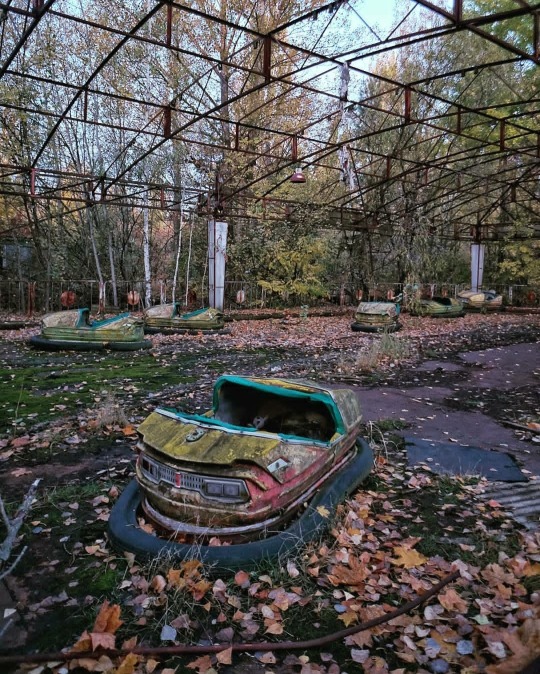
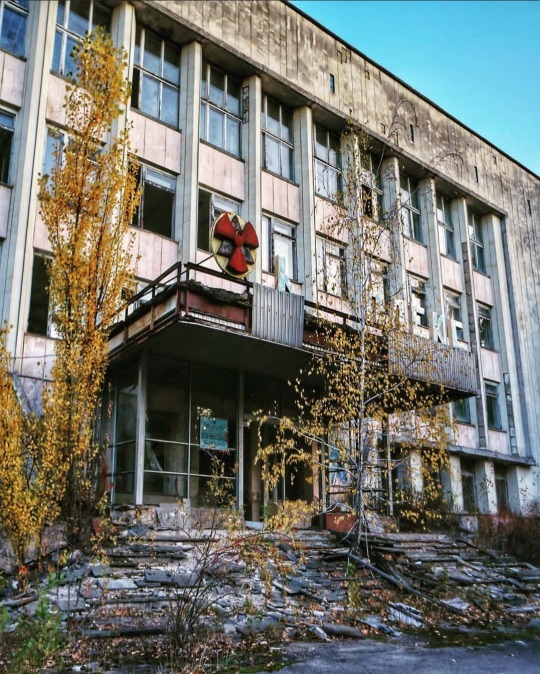




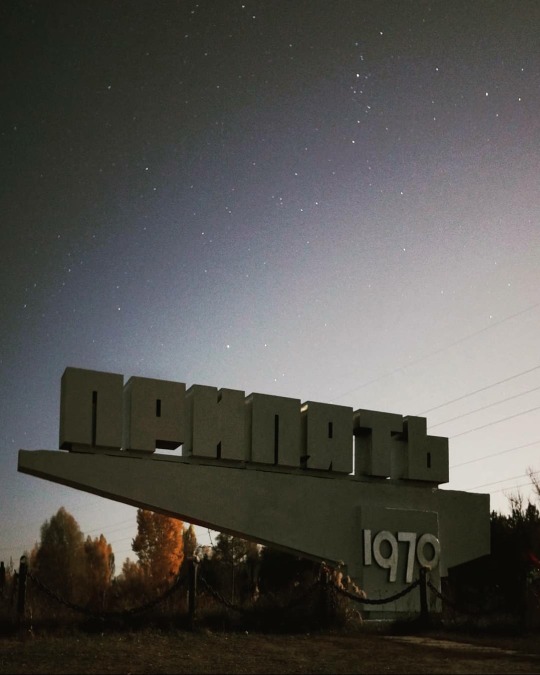
ℭ𝔥𝔢𝔯𝔫𝔬𝔟𝔶𝔩 𝔈𝔵𝔠𝔩𝔲𝔰𝔦𝔬𝔫 ℨ𝔬𝔫𝔢
📷 𝔩𝔞𝔫𝔞𝔰𝔞𝔱𝔬𝔯
#Chernobyl#prypiat#chernobyl exclusion zone#radiation#accident#ukraine#pripyat#nuclear#nuclear power plant#ferris wheel#park#abandoned#ghost town
279 notes
·
View notes
Text
A mural on the Pripyat Music School entitled “Music”.


The mural is made from a traditional Italian mosaic style called Smalti. Small, hand cut glass pieces make up the colors of the mural.
Photo Credits: Andre Josse
#chernobyl#pripyat#disaster#history#accidents and disasters#nuclear power#radiation#nuclear#abandonded#mural#ussr#soviet propaganda#soviet aesthetic#brutalist#music#music school#exclusion zone#aesthetic#autism#soviet art#glass tile#aes#tile mural#pretty#cool as fuck if you ask me#mosaic#mosaic art#glass mosaics#smalti
265 notes
·
View notes
Text
some guy in my public speaking class did a presentation on nuclear power AND he fumbled it. sir that’s my emotional support science hyperfixation how fucking dare you
#like 1 chernobyl happened in 1986 not 1968. 2 the usa has had a nuclear accident. it went downhill from there#also the speech was motivational tf does nuclear power have to to w motivation 💀
6 notes
·
View notes
Text
you know what really grinds my gears??? the misconceptions abt nuclear power and radioactivity
#no radiation does not make you glow or grow extra limbs ❤️#its sooo much worse#also nuclear power is relatively the safest way of producing energy based on the ratio of energy created:people who died on site#even with chernobyl! even with fukushima!#also fukushima and chernobyl where not at all accidents of the same magnitude#fukushima is nothing compared to chernobyl#the radiation in fukushima actually officially killed 0 (zero) people#it was all tsunami/earthquake#so yea vote nuclear or the fundings gonna get cut and safety measures will suffer bc ofc they will and thats when accidents happen#rbmk reactors DO explode ❤️#okay correction . radiation is related to glowing but only in like reactors#an irradiated person will never glow#thank you for coming to my ted talk#can you tell i have a special interest
3 notes
·
View notes
Text
I don’t talk about it much but one of my biggest interests is nuclear energy and disasters and I see that Netflix has recently added a new dramatized series on Fukushima daiichi so 👀
I’ve actually been really hoping for a docu series on the event and aftermath for a while, and even though I’m not big on the dramatized series I’m still super excited that this is happening because it might open the door for a proper documentary series in the near future
#anyways please don’t let shows deter you from supporting nuclear energy#every disaster we have experienced has drastically improved the safety of nuclear energy practices#I hate the fear mongering that often accompanies information about these disasters#even when Chernobyl happened in Russia the same accident could not have happened in the us#because rbmk type reactors were built with flaws thst had already been intentionally eliminated in American reactors#and the Fukushima disaster was a major flaw in preparation for natural disasters that should have been preventable#but the station was built with safety features for a large earthquake OR a tsunami but not both#which should have been considered given the high probability of the two combining#but instead of implimenting precautions for future natural disasters Japan shut down all nuclear facilities in the country#we need nuclear now more than ever if we want to continue industrializing without producing more greenhouse#and I wish people understood more about how nuclear power and waste disposal actually works#that was long whoops had a real autism moment there#anyways it’s called the days
1 note
·
View note